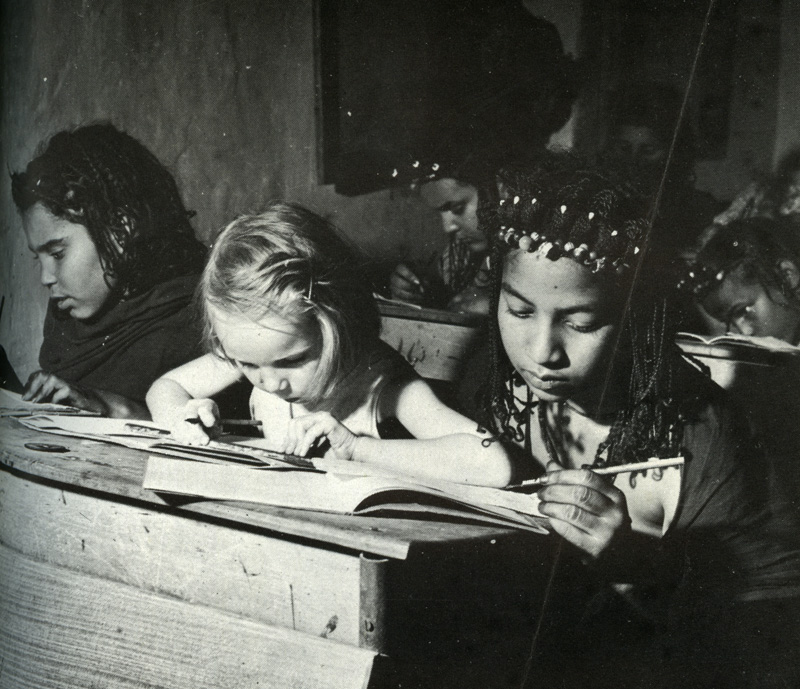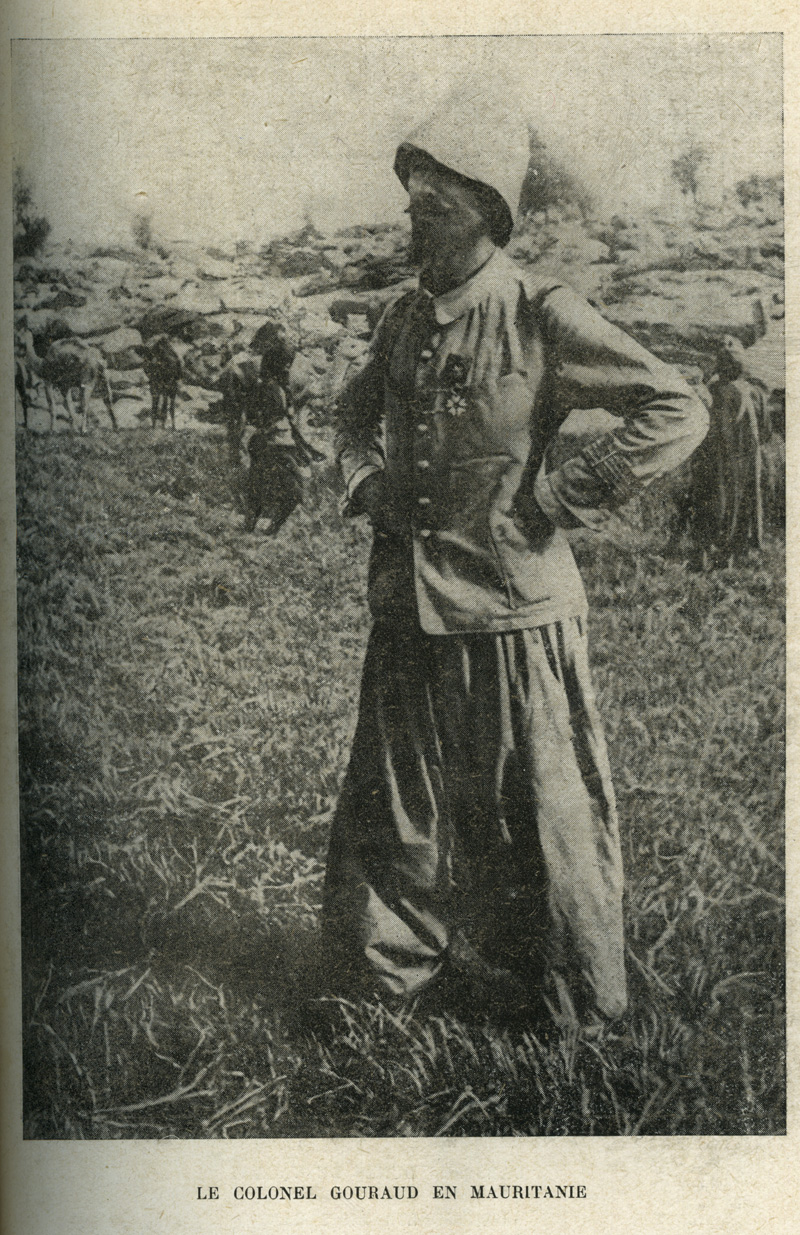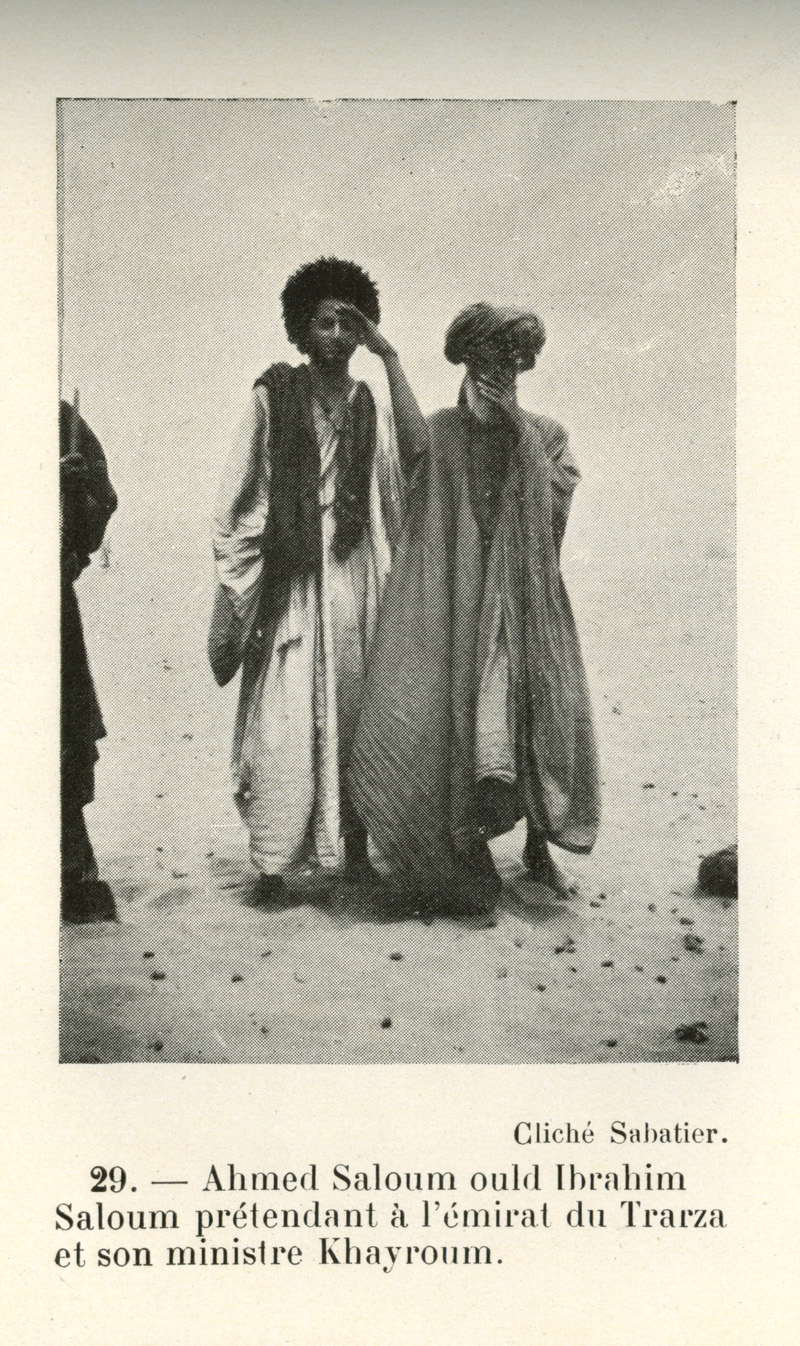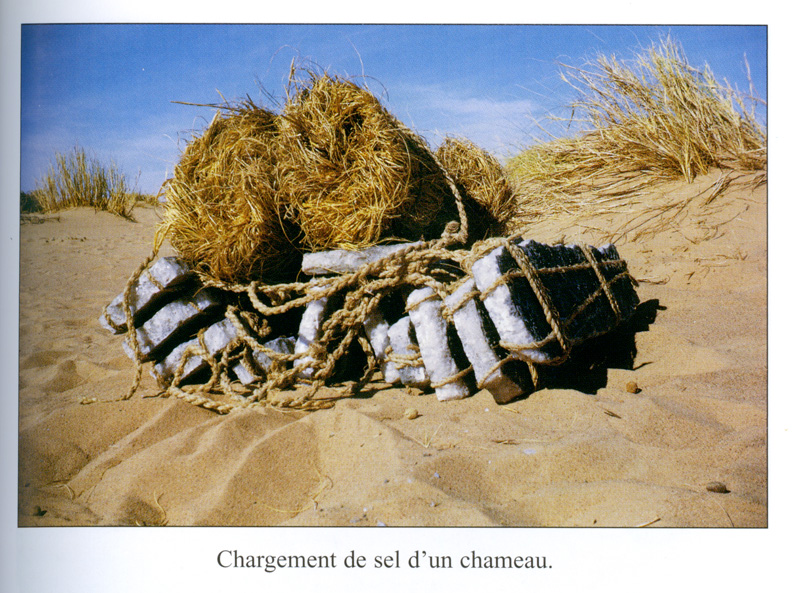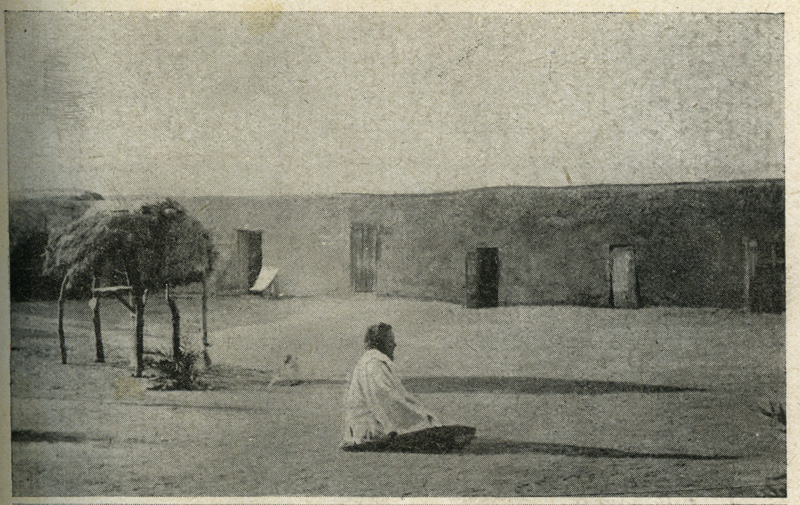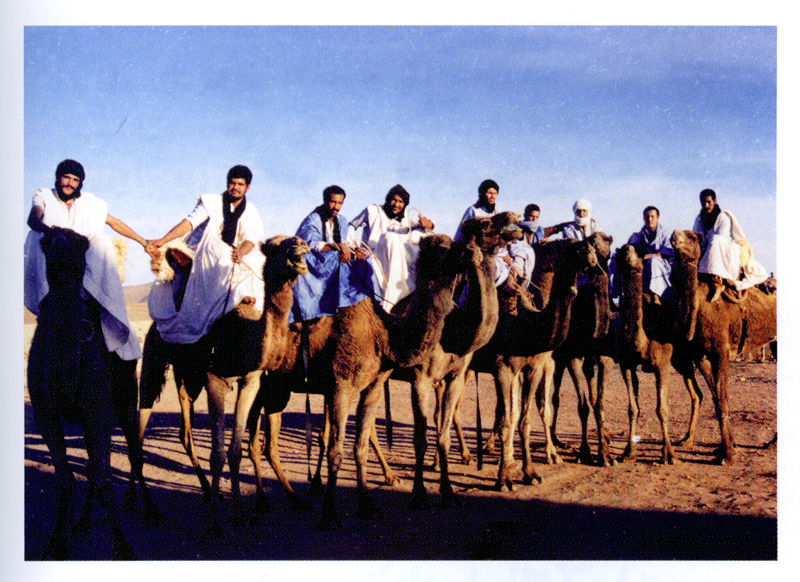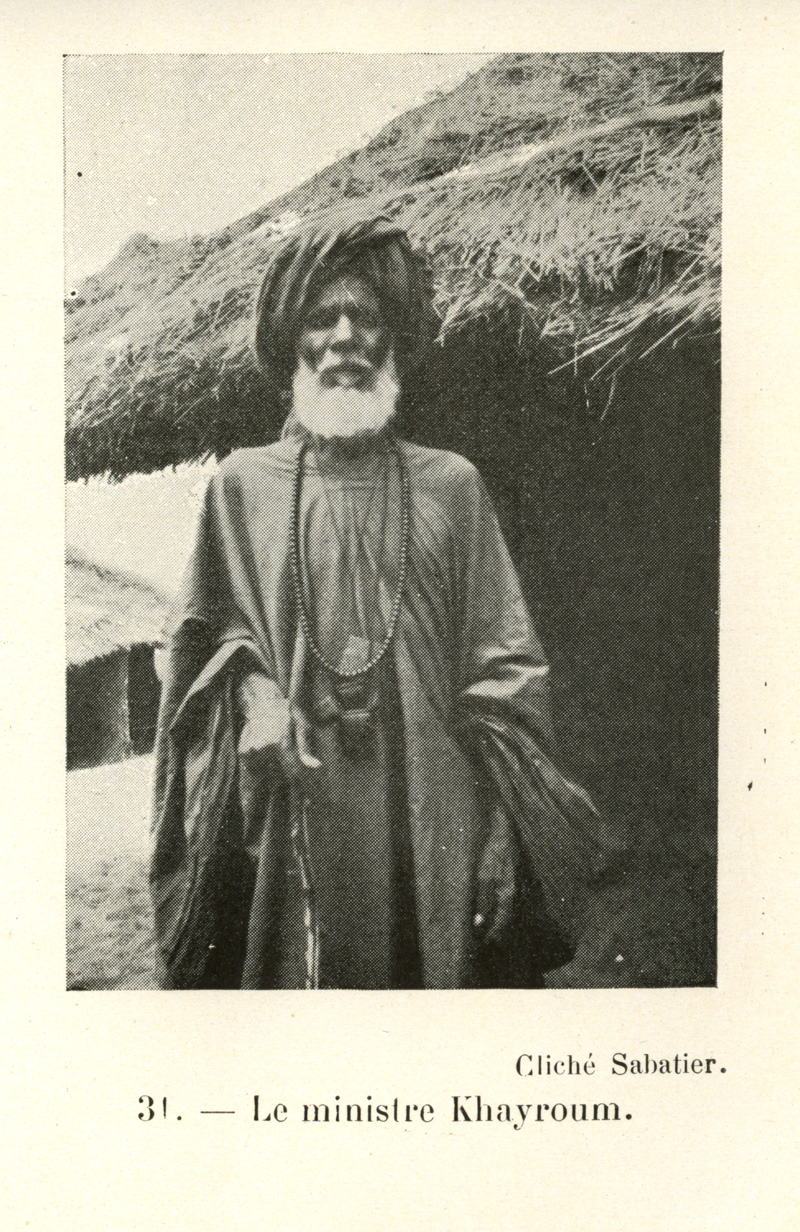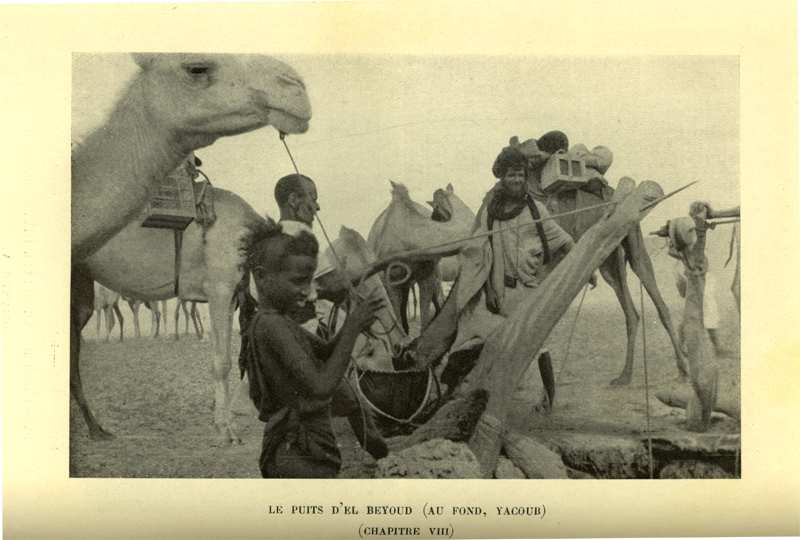Collaboration, Modernity and Colonial Rule: Sidiyya Baba and Mauritania
By David Robinson
- Browse:
- Documents
- Photographs
- Maps
- View All
Photographs
Armed Moorish Party
Date Range: 1900-1909Format: Image-StillImage/jpeg
This is a typical armed Moorish party out for raiding or defending itself from other parties. Gouraud included it in his book of recollections of his Mauritanian campaign.
Books
Date: 2000Format: Image-StillImage/jpeg
This is a photo of a typical library of a marabout or cleric, with manuscripts and published books placed in the squares of the masonry. Shaikh Sidiyya al-Kabir and Shaikh Sidiyya Baba had vast libraries and systems for placing and finding the different kinds of material.
Girls' School
Date Range: 1970-1979Format: Image-StillImage/jpeg
A picture of a girls' school in Mauritania in the late 20th century, not unlike the one which the French and Sidiyya Baba created in the early 20th century.
Gouraud, the leader of the French conquest of central Mauritania
Date Range: 1900-1909Format: Image-StillImage/jpeg
An image of Colonel Henri Gouraud during his conquest of central Mauritania during 1908-10. He went on to become a general and was very influential with the military and colonial circles in France. This photo contains the caption, "Le Colonel Gouraud en Mauritanie"
Group of marabouts photographed, with Dudu Seck or Bu El Mogdad II at far right
Date Range: 1910-1919Format: Image-StillImage/jpeg
Gouraud took this picture of a group of Mooorish clerics or zwaya. Dudu Seck, or Bu El Mogdad II, is the figure on the far right, and is serving as interpreter and emissary for the French. This comes from a different work by Gouraud, the leader of the French conquest of central Mauritania. This photo contains the caption, "A Moudjéria - Les chefs kountas du Tagant; à droite l'interprète el Mogdad."
Marabouts Maures
Date Range: 1900-1909Format: Image-StillImage/jpeg
Two French travelers took this photo of Mauritanian clerics in the early 20th century. They were part of the zwaya division of bidan society. This photo contains the caption, "Cliché Galland. 28. - Groupe de marabouts maures."
Picture of Sidiyya Baba's Sons, 1951
Date: 1951Format: Image-StillImage/jpeg
This is another photo from Du Puigadeau and portrays the sons of Sidiyya Baba in 1951. They were quite influential within colonial Mauritania and Senegal, and often made collection tours to Senegal. Abdallah, the third son, was the overall leader in the family after 1927. This photo contains the following caption, "Abdellah et Brahim Ould Cheikh Sidiya (tribu des Oulad Bieri). 1951. Abdellah est calife de la confrérie. Brahim est chargé des ziara en Cόre d'Ivoire et en Casamance."
Ruling House of Trarza
Date Range: 1900-1909Format: Image-StillImage/jpeg
These two French travelers took this photo of the emir and one other member of the ruling lineage of the Trarza confederation, which dominated southwestern Mauritania. They were from the hassan branch of bidan society. This photo contains the caption, "Cliché Sabatier. 29. - Ahmed Saloum ould Ibrahim Saloum prétandant à l'émirat du Trarza et son ministre Khayroum."
Salt Blocks
Date Range: 2000-2009Format: Image-StillImage/jpeg
This recent photo from Mauritania, also from Daniel, shows the salt slabs or blocks which the camels carried in their caravans which originated in mines, usually in the northern Sahara, and traveled south to the Sahelian region of West Africa to supply much needed salt. This photo contains the caption, "Chargement de sel d'un chameau."
Salt Caravan
Date Range: 2000-2009Format: Image-StillImage/jpeg
A recent color photo of a salt caravan transiting Mauritania. These caravans were even more important before the 20th century and French colonial rule. They originated in salt mines which were usually located in the northern part of the Sahara. The caravans supplied the Sahel and other parts of West Africa with the essential ingredient of salt, which was lacking in most of the region. This photo contains the caption, "La marche de la caravane dans les dunes de sable."
Sidiyya Baba in Prayer
Date Range: 1900-1909Format: Image-StillImage/jpeg
The French officer Henri Gouraud spent a great deal of time in Butilimit, Sidiyya Baba's capital, in 1908-10, when he was leading the French conquest of central Mauritania or Adrar. He or someone on his staff took this picture of Baba at prayer in his courtyard.
Takna Soldiers
Date Range: Early 20th CenturyFormat: Image-StillImage/jpeg
A recent picture of the Tekna. In the early 20th century they were a well-armed, mobile group of raiders and traders rooted in the north, in what the Spanish called Rio de Oro and would today be called the Western Sahara. They ranged far to the south, along with the Awlad Bu Sba`, and put the Sidiyya on the defensive.
Trarza Minister Khayroum
Date Range: 1900-1909Format: Image-StillImage/jpeg
Two French travelers took this picture of the minister or manager of Trarza affairs, Khayrum. He knew several languages, handled negotiations, traveled widely, and survived many struggles for power in the Trarza confederation in the late 19th and early 20th century. This photo contains the following caption, "Cliché Sabatier. 31. - Le ministre Khayroum."
Typical Tent
Date Range: 1930-1939Format: Image-StillImage/jpeg
Odette du Puigadeau traveled to Mauritania several times in the 1930s and published her accounts and pictures upon her return. Marion Senones accompanied her on this trip. This is a photo of their tent, and it is typical of the texts that Moors used for living, traveling and trading across Mauritania.
Wells
Date: 1937Format: Image-StillImage/jpeg
This photo shows the importance of wells for both the camels and the human beings living and traveling in the desert. Travelers had to know the location of the wells and who controlled access to them. This photo contains the caption "Le Puits d'El Beyoud (Au Fond, Yacoub) Chapitre VIII."
Women Musicians, Butilimit
Date: 1951Format: Image-StillImage/jpeg
A photo of some of the social life of the Moors in the mid-20th century. This photo contains the caption, "Joueuses de tobol. Boutilimit. 1951."


